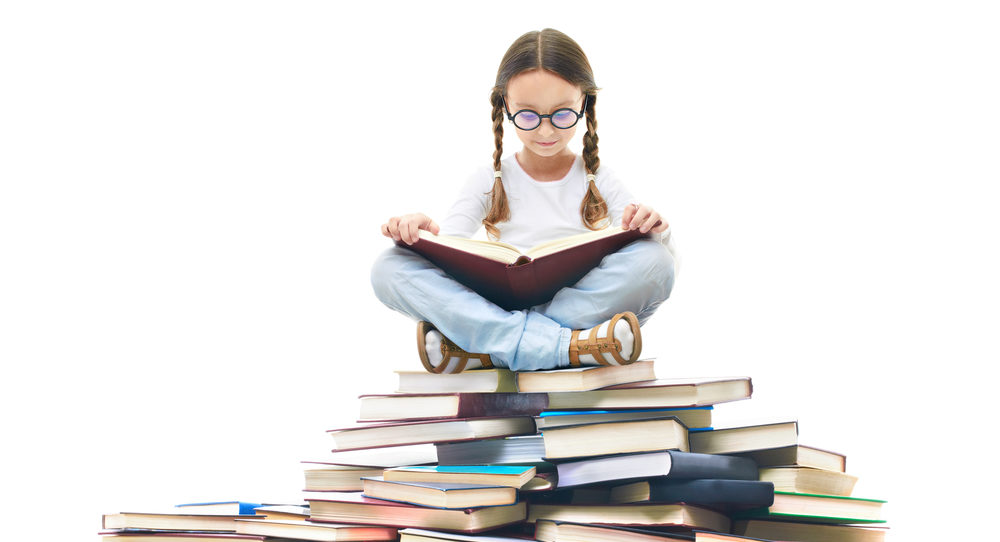By Rebecca Fraser
One thing I’m frequently asked by budding writers, is: ‘How can I become a better writer?’. There are many answers to this question, of course, but one I give to everyone as a starting point is to read often, read widely, and read forensically.
William Faulkner once said, “Read, read, read. Trash, classics, good and bad, and see how they do it. Just as a carpenter works as an apprentice and studies the master. Read! You’ll absorb it. Then write.”
By exposing themselves to different genres and styles of writing, children develop a better understanding of the ‘music’ of words: how syntax transforms words and phrases into well-formed sentences; the emotive power of prose, the magic rhythm and beats of poetry, or the art of narrative structure and the relationship between text, art, and panel sequencing in comics and graphic novels.
They’ll enter new worlds, meet new characters, be exposed to different cultures and historical events, be presented with new dilemmas, puzzle over mysteries, laugh out loud, be fearful for, or weep for, a character they’ve come to care about … or simply be entertained in the most traditional sense of the word.
Reading is an activity the whole family can enjoy together, especially with the cooler days and longer nights looming. There’s nothing nicer than snuggling on the couch with a mug of hot chocolate to read a chapter or two of a good book together.
There are hundreds of classics to choose from when it comes to children’s literature, but I have focussed on Australian authors to celebrate our home-grown talent. Australia has a wonderfully diverse pool of literary talent across all genres, and it was difficult to condense this list of classics to just ten books the whole family could turn and return to. Selections are based on the writing style, and content of each of these treasured icons of Aussie children’s literature.
Each book showcases different narrative techniques and literary devices to enjoy and explore. Whether it’s a snapshot of Australian life from a different era or perspective, a deep sense of setting and place, a multi-faceted, relatable protagonist with a strong voice, the understated art of speculative fiction, or beautiful prose, these books offer entertainment and education to the budding creative writing enthusiast. But there are so many more to enjoy … may they all find their way to your bookshelves!
- Seven Little Australians, by Ethel Turner
First published in 1894, this classic novel has been loved by generations. It follows the misadventures of the Woolcot family, and evokes an Australian lifestyle reflective of the era. - Blueback, by Tim Winton
Nobody quite captures Australian coastal settings and landscape like Winton, and this is again reflected in this moving and poignant tale. Blueback meshes a coming of age theme with a refined environmental backbeat. A boy, his mother, and a fish: it’s beautiful. - Storm Boy, by Colin Thiele
The bond between Storm Boy and Mr Percival is one of Australia’s landmark literary friendships. Rich in visual imagery and quiet emotion, it’s a beautiful (but heart wrenching) read. - Playing Beatie Bow, by Ruth Park
The time travelling storyline of 14-year-old Abigail Kirk from contemporary Australia to The Rocks in the year 1873 is a captivating glimpse into Victorian-era Sydney carried by a well-researched, well-crafted plot. - The Complete Adventures of Snugglepot and Cuddlepie, by May Gibbs
The adventures of the gumnut babies take readers from the bush to the ocean and back again. Deeply imaginative, Gibbs has created a uniquely Australian fantasy world populated with a memorable cast of inventive characters. - Picnic at Hanging Rock, by Joan Lindsay
This iconic historical mystery revolves around a group of Australian boarding schoolgirls who go missing at Hanging Rock on a Valentine’s Day picnic in 1900. It continues to spark imagination and debate to this day – a compelling masterpiece. - The Magic Pudding, by Norman Lindsay
This children’s classic penned in 1918 is divided into slices, instead of chapters. Beautifully illustrated and with sections of the narrative told in rhyming verse and song, it continues to delight the young, and the young at heart. - I Can Jump Puddles, by Alan Marshall
Marshall contracted polio at six and I Can Jump Puddles is the moving first-of-three autobiographical accounts, recalling his childhood experience with his disability in rural Victoria. Full of heart and spirit – an exploration of courage in the face of adversity. - Possum Magic, by Mem Fox
Grandma Poss uses bush magic to make Hush the possum invisible … but then can’t turn her back again. The power of this enchanting picture book lies not just in the charming Aussie-style quest, but Julie Vivas’ stunning illustrations. - Fatty Finn, by Sid Nicholls & Ginger Meggs, by Jimmy Bancks
Take a trip back to the 1920’s with these two mischief-making characters who won a place in the hearts of everyday Australians through their long-running comic strips. Wonderful examples of sequential storytelling to compare and contrast with contemporary works for those interested in the medium of comics.


